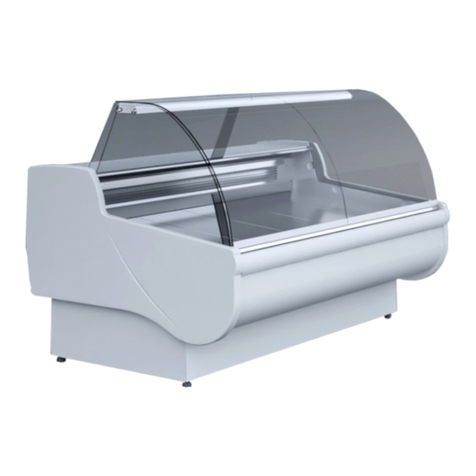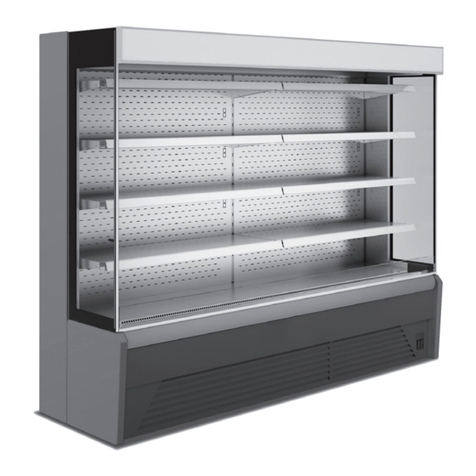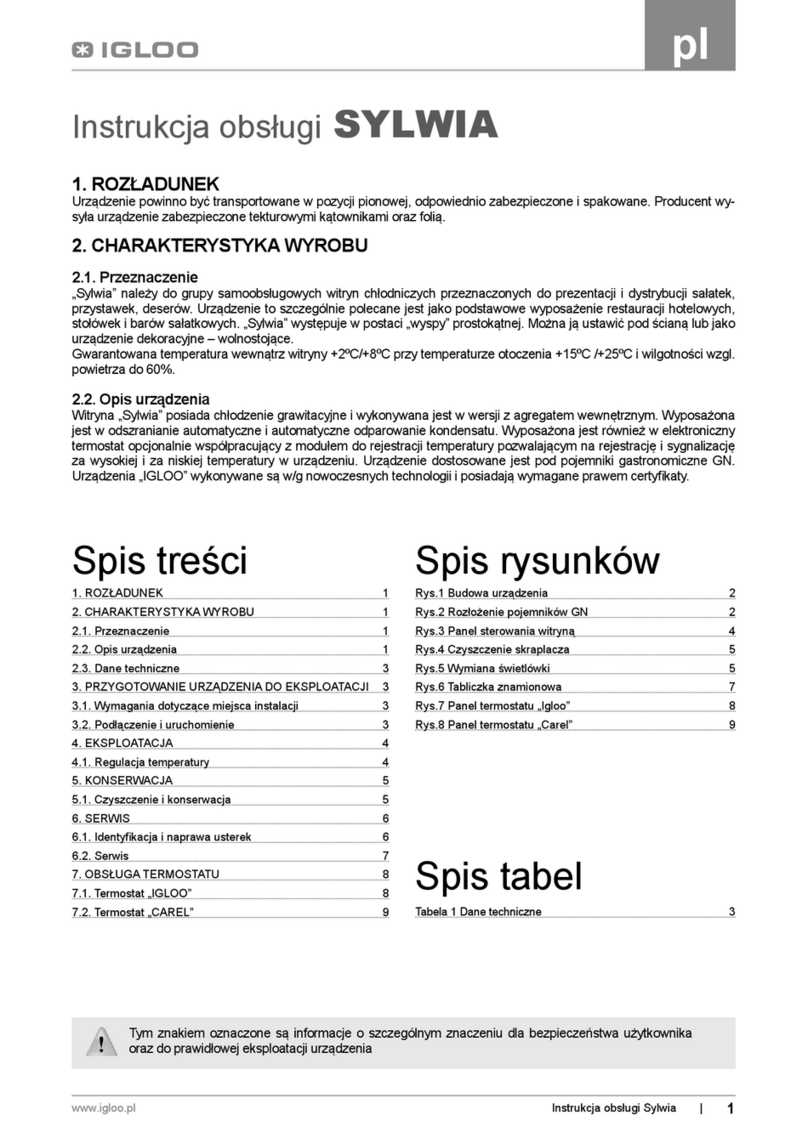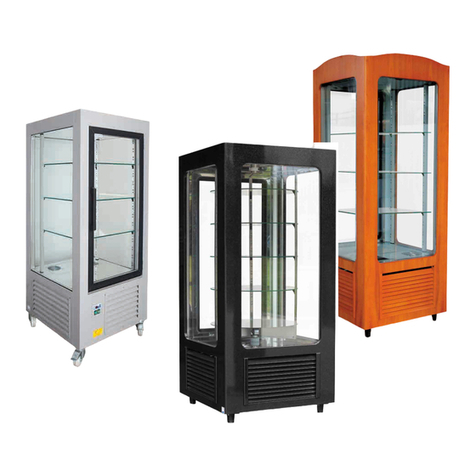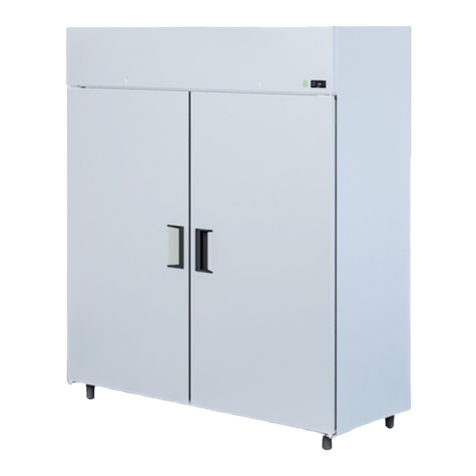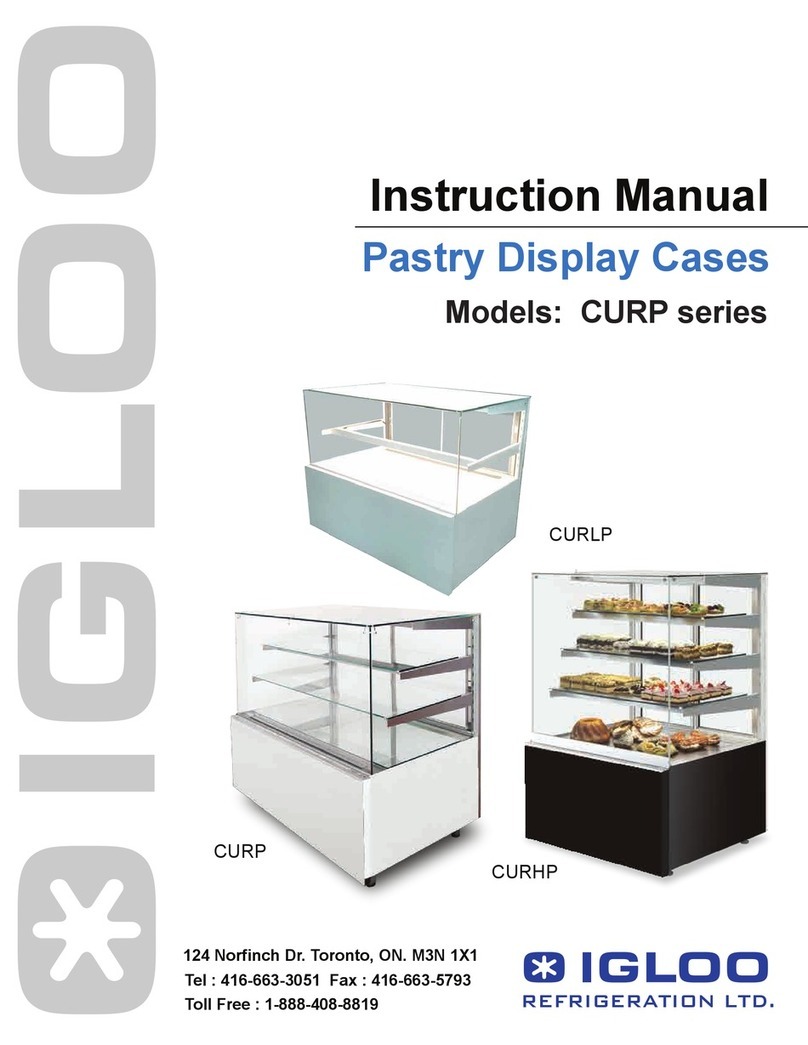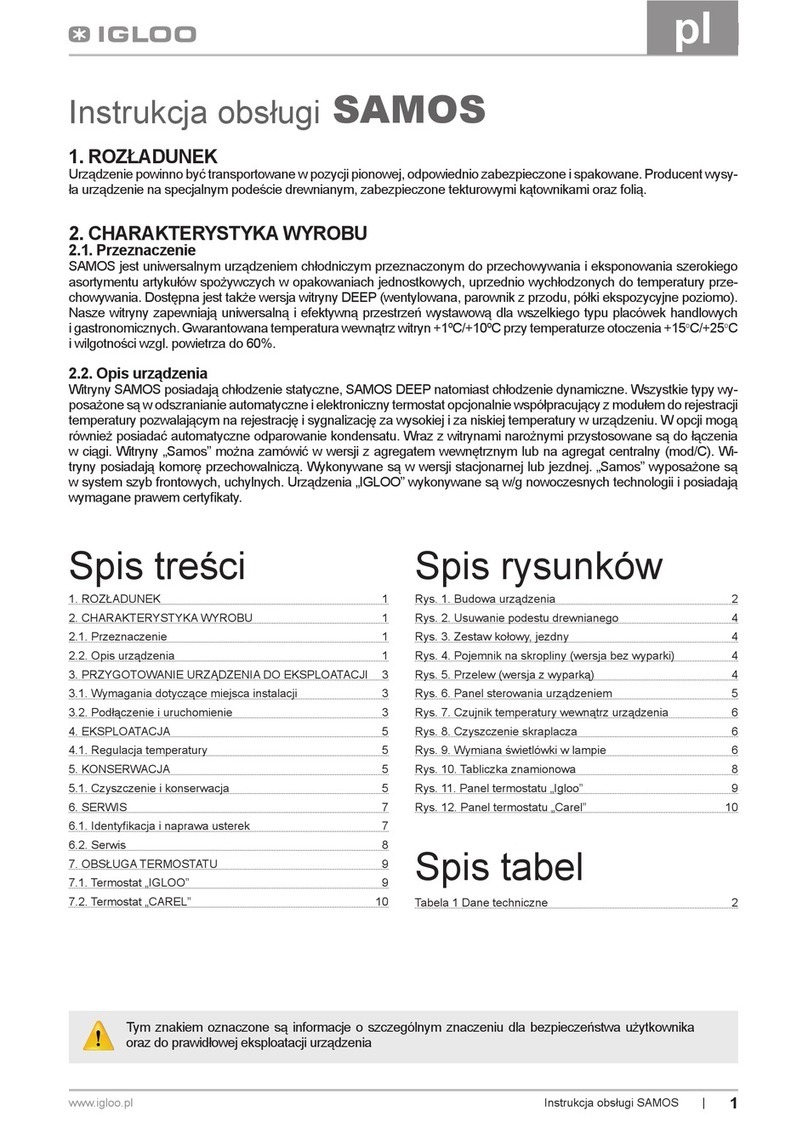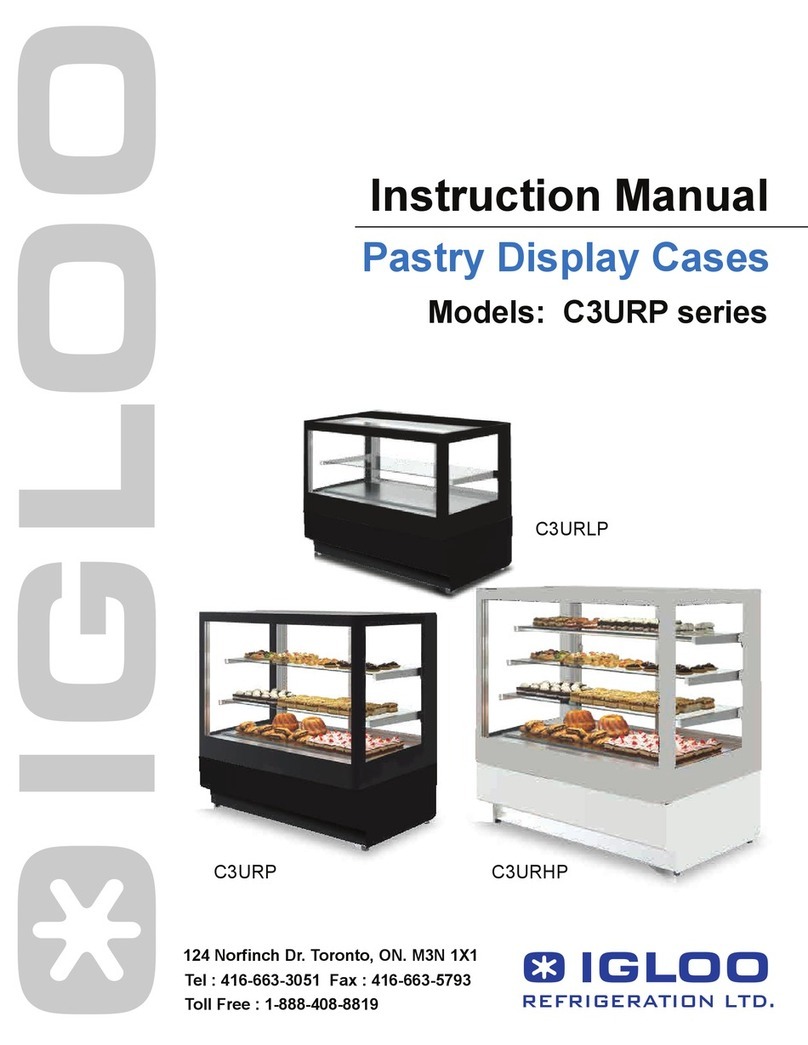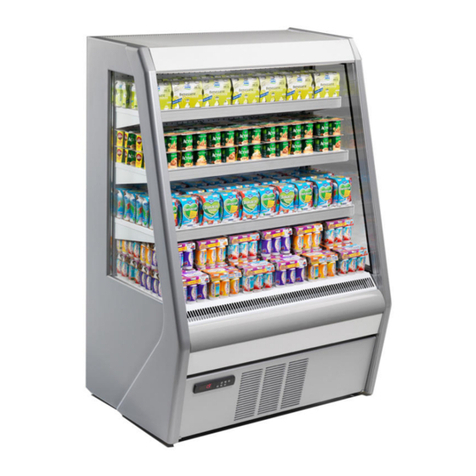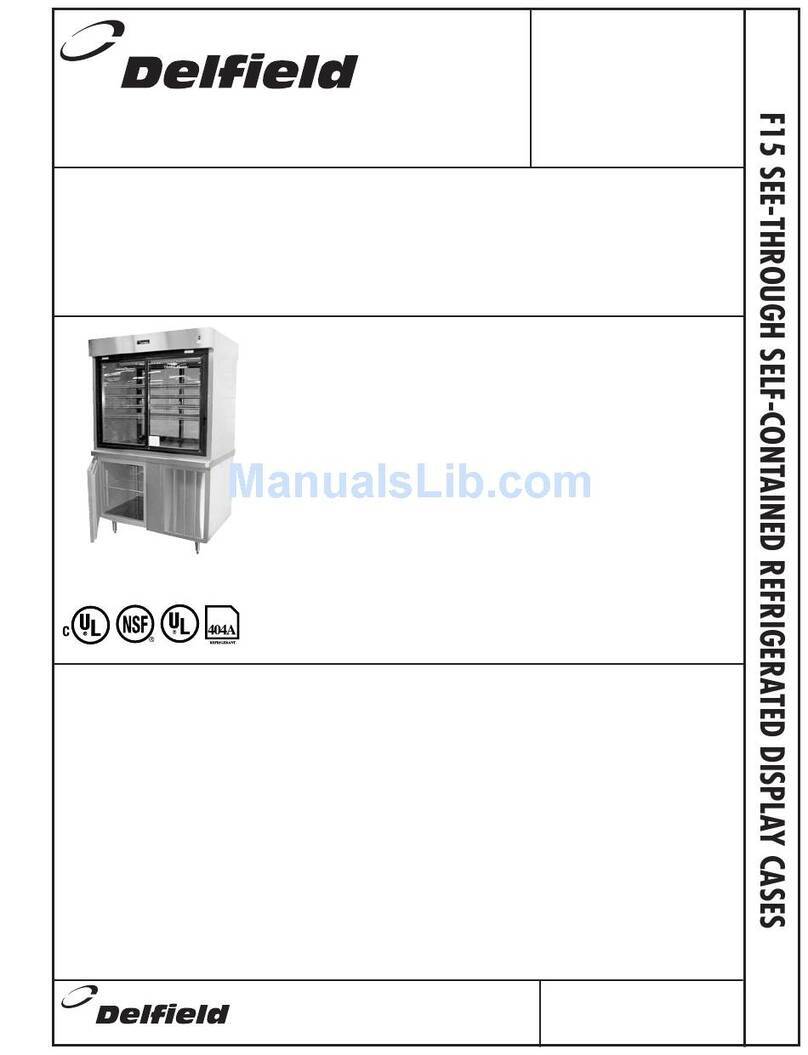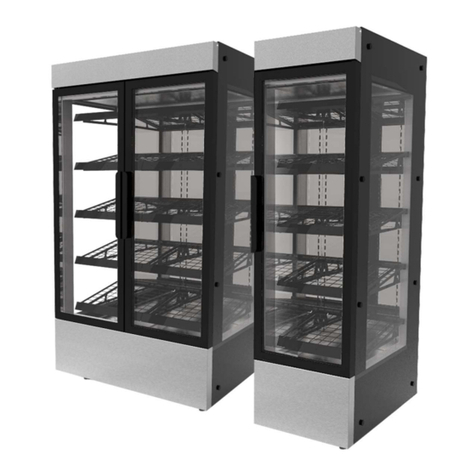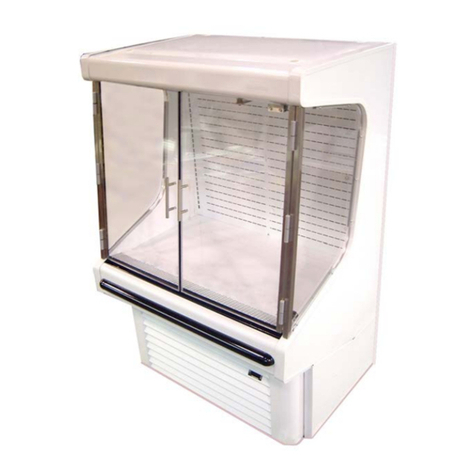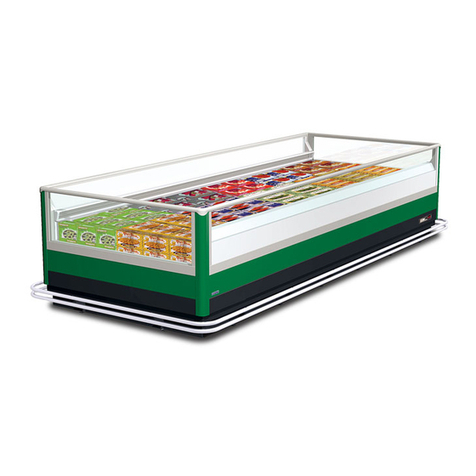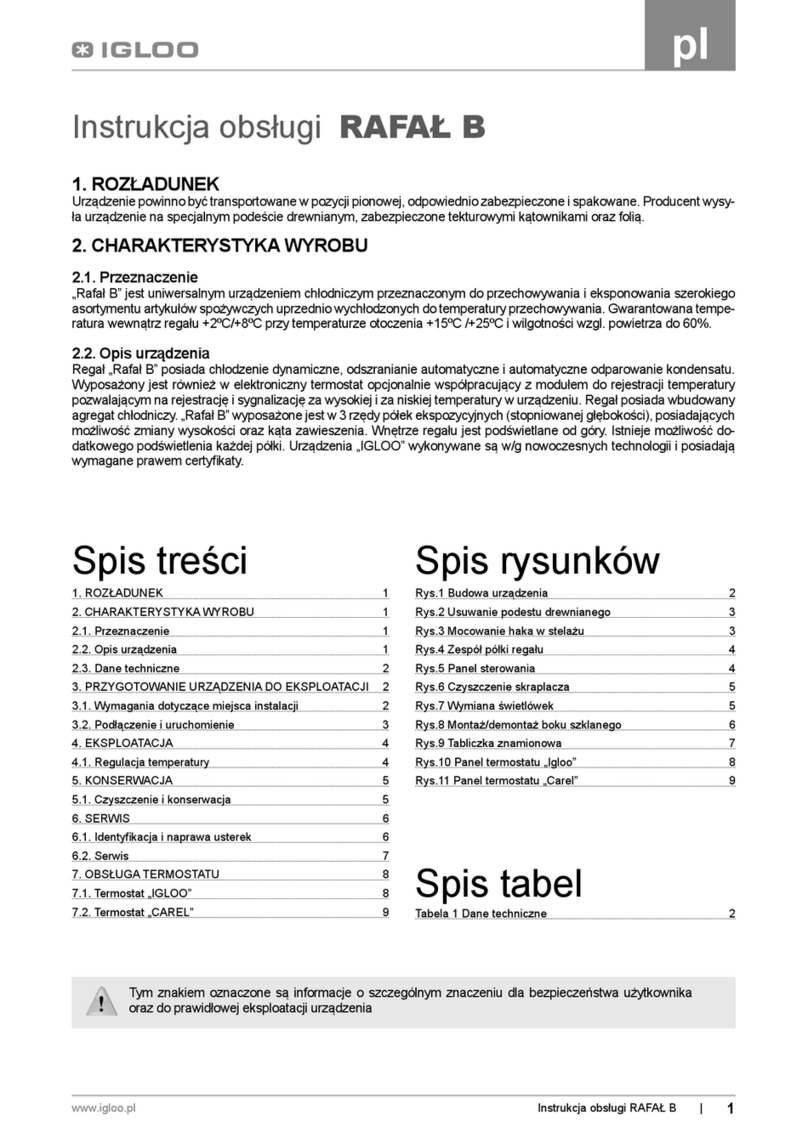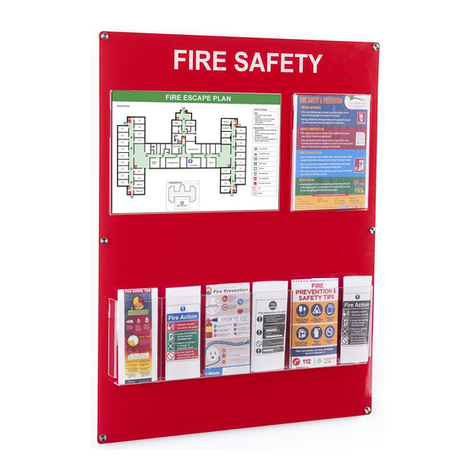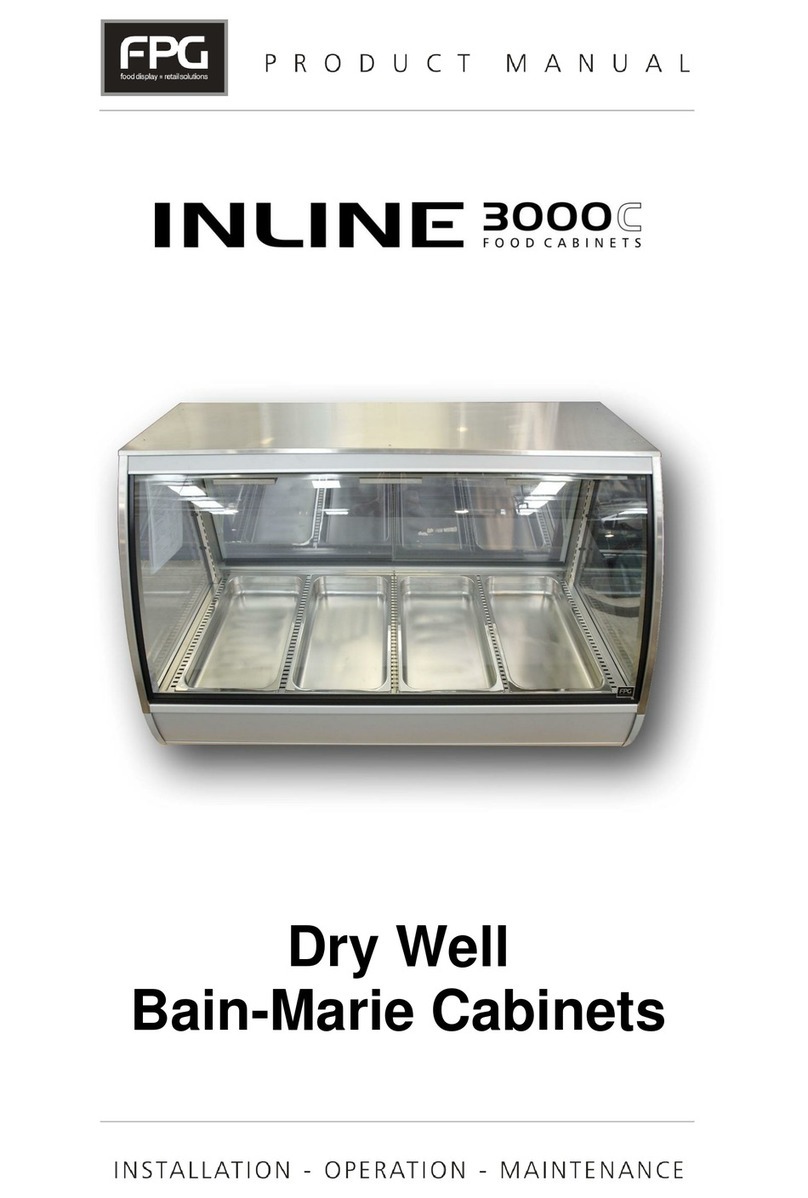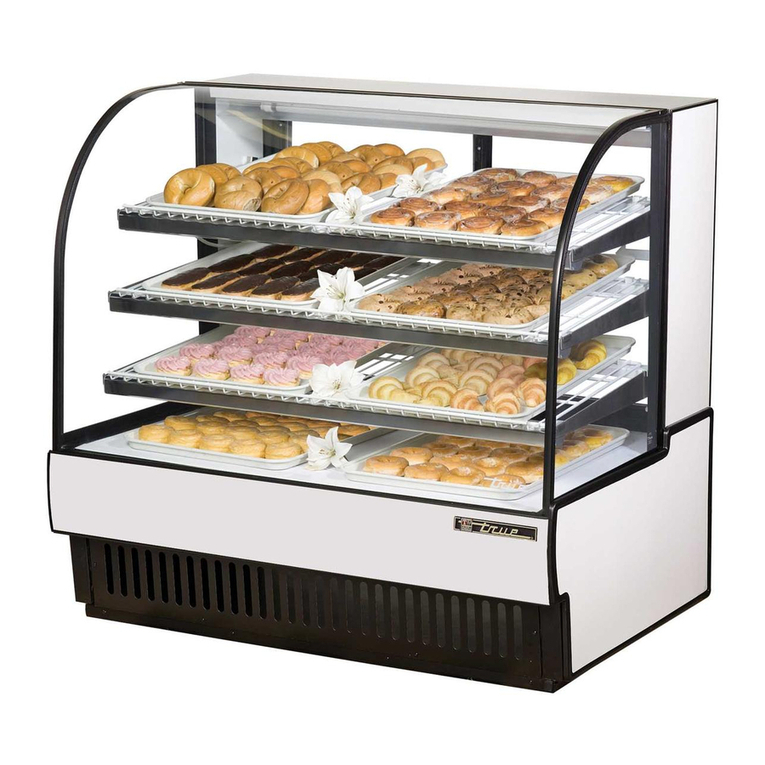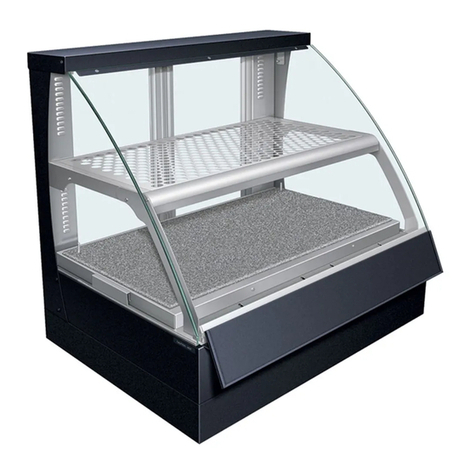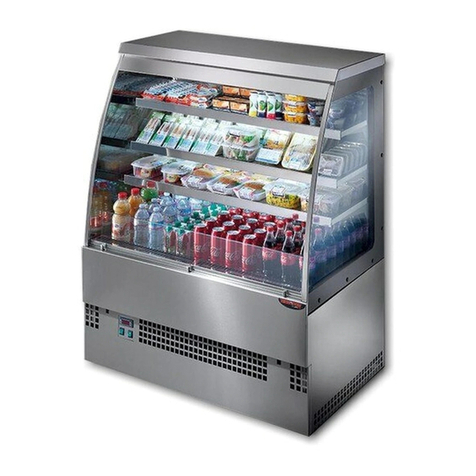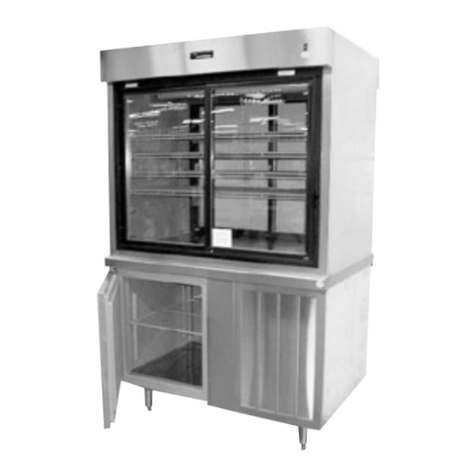
7
pl
Instrukcja obsługi Ibizawww.igloo.pl
6. SERWIS
6.1. Identyfikacja i naprawa usterek
W przypadku wystąpienia jakichkolwiek trudności podczas uruchamiania urządzenia lub podczas jego eksploatacji należy
powrócićdo tych rozdziałów instrukcji obsługi, które wyjaśniająwykonywanąoperację. Ma to na celu upewnienie się, czy
urządzenie jest prawidłowo obsługiwane. Jeżeli trudności występująnadal, poniższe wskazówki pomogąw ich usunięciu.
Urządzenie nie pracuje...- Upewnićsię, czy:
• Urządzenie jest podłączone do sieci prądu elektrycznego
• Napięcie i częstotliwość w sieci sąodpowiednie z tymi, jakie zaleca producent (patrz tabliczka znamionowa)
• Włączony jest wyłącznik główny
• Termostat jest załączony (Dotyczy term. Igloo – Jeśli na wyświetlaczu wyświetlająsięjedynie dwie kropki – włącz
termostat)
Urządzenie pracuje, oświetlenie nie świeci...- Upewnićsię, czy:
• Wyłącznik oświetlenia jest w pozycji załączonej
• Świetlówka lub zapłonnik w urządzeniu nie uległy spaleniu
Wycieka woda spod urządzenia lub do wnętrza komory
• Sprawdzićprawidłowość wypoziomowania urządzenia
• Sprawdzićdrożność przewodów odpływowych
• Opróżnićtackęna skropliny (przelew z wyparki)
• Sprawdzićczy w rynience i na parowniku nie zalega duża ilość lodu – w razie potrzeby odszronić
Urządzenie nie osiąga odpowiedniej temperatury, oświetlenie świeci...- Upewnićsię, czy:
• Wyłącznik główny jest w pozycji załączonej
• Nastawa temperatury na termostacie jest odpowiednio ustawiona
• Termostat działa poprawnie
• Skraplacz nie jest zanieczyszczony, w razie potrzeby wyczyścić
• Temperatura otoczenia nie jest wyższa niż25ºC
• Minęło wystarczająco dużo czasu dla schłodzenia produktów
• Otwory wentylacyjne urządzenia nie sązablokowane
• Drzwi urządzenia zamykająsięwłaściwie i czy uszczelka przylega do korpusu urządzenia
(Dotyczy term. „IGLOO”) Termostat wyświetla C0 lub C1 lub C2 zamiast temperatury:
Sytuacja taka ma miejsce, jeżeli zostałuszkodzony jeden z czujników termostatu wówczas mogąpojawićsię
następujące komunikaty:
• C0 –uszkodzenie czujnika temperatury wewnątrz komory –wezwaćautoryzowany serwis
• C1 –uszkodzenie czujnika parownika - wezwaćautoryzowany serwis
• C2 –uszkodzenie czujnika alarmu skraplacza (lub uszkodzenie drugiej czujnika parownika) – wezwaćautoryzowa-
ny serwis
(Dotyczy term. „CAREL”) Termostat wyświetla E0 lub E1 lub L0 lub HI lub EE lub Ed lub DF zamiast tempe-
ratury:
• E0 -uszkodzenie czujnika temperatury wewnątrz komory- wezwaćautoryzowany serwis
Uszczelkędrzwi należy czyścićwyłącznie czystąwodąbez dodatku środków myjących i pamiętaćo
jej dokładnym wysuszeniu. Uszczelka nie może miećkontaktu z substancjami tłustymi ani olejami!
Podczas czynności konserwujących należy sprawdzićczy drzwi zamykająsięwłaściwie.
Próba: umieścićkartkępapieru pomiędzy uszczelką, a obudowąi zamknąć drzwi. Papier po-
winien stawiaćwyczuwalny opór przy próbie wyciągania
Elementy urządzenia mogąkorodowaćprzy niewłaściwym użytkowaniu i konserwacji.
Należy przestrzegaćzasad:
• Nie dopuszczaćdo kontaktu powierzchni urządzenia z środkami zawierającymi chlor i/lub sodę
w różnych odmianach, które niszcząich warstwęochronnąi elementy składowe urządzenia
(dotyczy równieżróżnych gatunków stali nierdzewnej)
Podczas czynności konserwujących należy uważać, aby nie uszkodzićtabliczki znamionowej
urządzenia Rys.11 (str.8), która zawiera istotne informacje dla serwisantów oraz firm zajmują-
cych sięusuwaniem odpadów.
